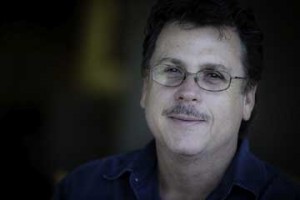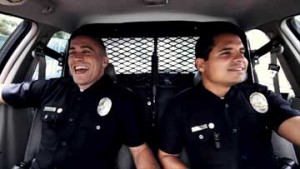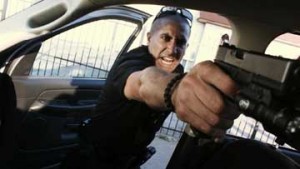
Supervising sound editor Michael Wilhoit and his crew from Soundelux were tasked with recreating the sonic world of a Los Angeles beat cop for director David Ayer’s new police thriller End of Watch. Released this week by Open Road Films, the movie tells the story of two young police officers, played by Jake Gyllenhaal and Michael Peña, who become the targets of a Mexican drug cartel.
End of Watch is told in a found-footage manner. The officers use a handheld HD camera to covertly record their shifts in South Los Angeles for a film class. This stylistic device lends the story a sense of immediacy and contributes to the ratcheting tension.

The low-tech realism of the imagery is carried over into the soundtrack. “We did things on this film that we would normally never do,” Wilhoit said. “We recorded a lot of sounds including footsteps on a Foley stage with low-quality video cameras, because that made it sound more real. We usually work with the best quality professional microphones, but here we sometimes used the cheapest stuff available.”
“Our job was not to over-produce the soundtrack,” he added. “We didn’t want it to sound like a ‘movie,’ but rather like it is happening ‘now.’ We wanted the audience to feel like they are with these guys wherever they go.”
As a result, Wilhoit relied primarily on his grungy, original recordings, rather than pristine sound library material. He and his crew – which included his daughter, dialogue editor Kimberly Wilhoit, and sound designer Roland Thai – made extensive field recordings. They spent a full day in an LAPD car lot recording police car engines and sirens that exactly matched those used in the film. They also employed an actual LAPD dispatcher for dialogue recording sessions.

Wilhoit and crew spent another day recording authentic firearms. “There were several gun battles in the film,” Wilhoit said. “In most movies, the gunshots don’t sound real. They are amped up. Real guns sound more like firecrackers, and that’s what we wanted. We wanted it to sound like it does in real life.”
A similarly minimalistic approach was taken during the final mix, which was completed at Todd-AO Hollywood, by re-recording mixers Joe Barnett and Christian Minkler. “Again, the movie wasn’t mixed the way movies normally are,” Wilhoit said. “The mixers made it appear as though the sound is coming directly from the camera the characters are using. David Ayer’s direction was, ‘make it sound great, but don’t overdo it.’”
Ayer was intimately involved throughout the sound process, Wilhoit added. “David was very good at directing sound,” he said. “He had a clear vision and made it easy to follow. He had a keen interest in the sound for his film, which from our perspective made him a joy to work with.”





